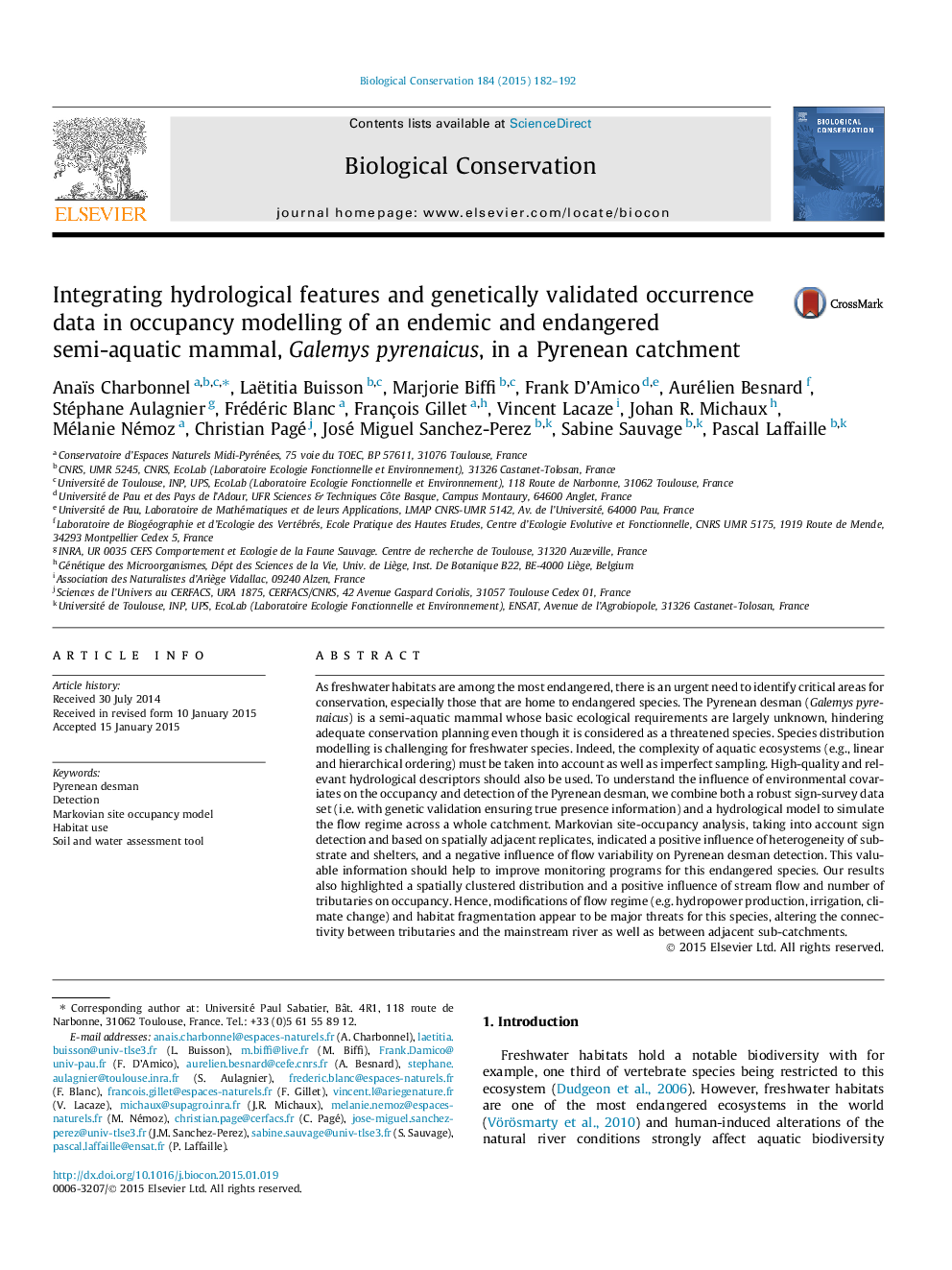| کد مقاله | کد نشریه | سال انتشار | مقاله انگلیسی | نسخه تمام متن |
|---|---|---|---|---|
| 6300043 | 1617917 | 2015 | 11 صفحه PDF | دانلود رایگان |
عنوان انگلیسی مقاله ISI
Integrating hydrological features and genetically validated occurrence data in occupancy modelling of an endemic and endangered semi-aquatic mammal, Galemys pyrenaicus, in a Pyrenean catchment
دانلود مقاله + سفارش ترجمه
دانلود مقاله ISI انگلیسی
رایگان برای ایرانیان
کلمات کلیدی
موضوعات مرتبط
علوم زیستی و بیوفناوری
علوم کشاورزی و بیولوژیک
بوم شناسی، تکامل، رفتار و سامانه شناسی
پیش نمایش صفحه اول مقاله

چکیده انگلیسی
As freshwater habitats are among the most endangered, there is an urgent need to identify critical areas for conservation, especially those that are home to endangered species. The Pyrenean desman (Galemys pyrenaicus) is a semi-aquatic mammal whose basic ecological requirements are largely unknown, hindering adequate conservation planning even though it is considered as a threatened species. Species distribution modelling is challenging for freshwater species. Indeed, the complexity of aquatic ecosystems (e.g., linear and hierarchical ordering) must be taken into account as well as imperfect sampling. High-quality and relevant hydrological descriptors should also be used. To understand the influence of environmental covariates on the occupancy and detection of the Pyrenean desman, we combine both a robust sign-survey data set (i.e. with genetic validation ensuring true presence information) and a hydrological model to simulate the flow regime across a whole catchment. Markovian site-occupancy analysis, taking into account sign detection and based on spatially adjacent replicates, indicated a positive influence of heterogeneity of substrate and shelters, and a negative influence of flow variability on Pyrenean desman detection. This valuable information should help to improve monitoring programs for this endangered species. Our results also highlighted a spatially clustered distribution and a positive influence of stream flow and number of tributaries on occupancy. Hence, modifications of flow regime (e.g. hydropower production, irrigation, climate change) and habitat fragmentation appear to be major threats for this species, altering the connectivity between tributaries and the mainstream river as well as between adjacent sub-catchments.
ناشر
Database: Elsevier - ScienceDirect (ساینس دایرکت)
Journal: Biological Conservation - Volume 184, April 2015, Pages 182-192
Journal: Biological Conservation - Volume 184, April 2015, Pages 182-192
نویسندگان
Anaïs Charbonnel, Laëtitia Buisson, Marjorie Biffi, Frank D'Amico, Aurélien Besnard, Stéphane Aulagnier, Frédéric Blanc, François Gillet, Vincent Lacaze, Johan R. Michaux, Mélanie Némoz, Christian Pagé, José Miguel Sanchez-Perez,